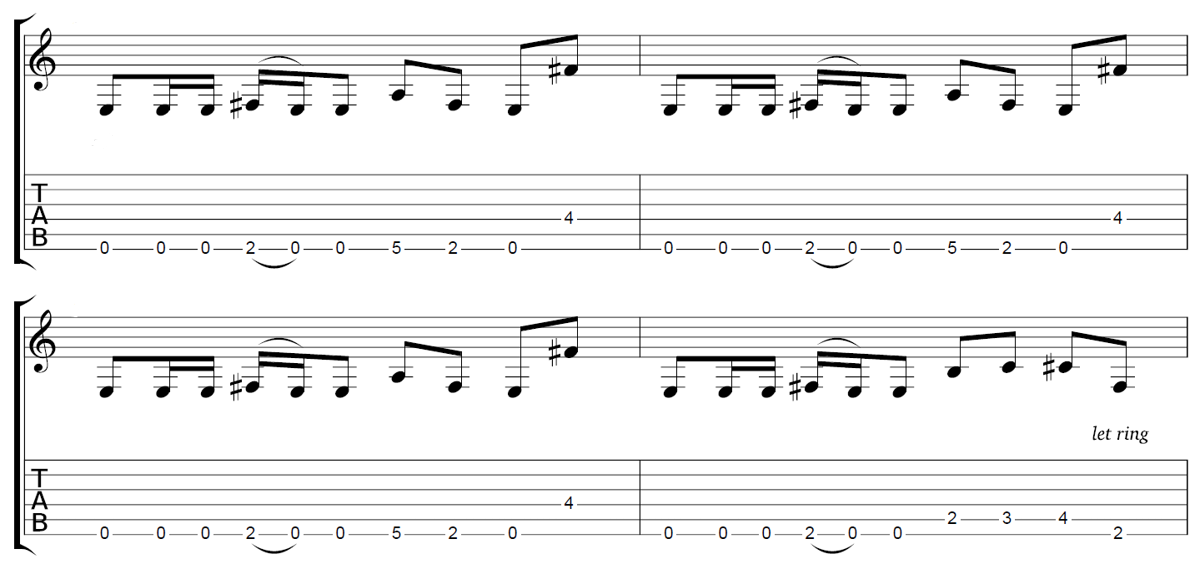Play Faster Blues Licks And Develop Vital Guitar Skills With The Pedal Point Technique
Incorporate Open Strings In Guitar Solos For An Exclusive Sound
By Antony Reynaert
There are more than a hundred recipes to create a blues or rock solo, but this method is a crucial one for every guitarist as it gives such a unique and exclusive feel to your guitar playing that you just have to learn it. Are you ready to give your guitar solos a creative boost with this vital guitar technique of throwing in ‘pedal notes’ in the form of open strings? It’s not only extremely awesome when improvising with this concept but it’s also a great way to develop several essential playing abilities for guitarists, such as fretboard knowledge, alternate picking and hand coordination. This technique is essential for your development as it forms the base of playing fast blues, rock, jazz and many more musical styles.
Why The Pedal Point Technique Is Essential To Your Development As A Guitarist
A pedal point is a technique where different notes are played around one stationary note. This stationary note is referred as the pedal note or also called the pedal tone. In guitar playing, this pedal note is often an open string. To give you an overall idea of how this technique sounds, have a look at the example below.

A lot of the most iconic songs use this technique in both rhythm and lead guitar playing. For example, the solo in ‘Suck My Kiss’ from The Red Hot Chilli Peppers or the song ‘Over The Hills And Far Away’ from Led Zeppelin. When listening to such songs, try to figure out the tone where everything is built around. This pedal tone is the base of the song and licks or riffs are injected above it.
Have a listen to the riff below. We notice the open E string where the riff is built upon. This open E string functions as the pedal note. As you can feel, the riff holds this driving force with it, which is exactly the purpose of the pedal point technique in this case. Because of this momentum it’s useable for fast blues licks so it’s a guitar playing technique not to be missed.
Click here for the audio example of this riff
How To Create A Unique Sound With Just One String And A Simple Pull-Off Technique
The method of incorporating open strings in a solo and creating a special and rare guitar sound is done with hammer-ons and pull-offs. You can basically hammer-on to any open string that’s part of the scale and pull-off to the open string again. Being able to play the scale on one string will be a huge advantage in using this method so it’s crucial to learn this first.
To explain this open string technique for guitar solos a bit more, I’ll pick a random key. Let’s say we’re playing a solo in G minor pentatonic. Typically when the technique of pedal point is used on an open string, we tend to build around the root, third or fifth of the scale. This is quite common but is not mandatory as long as you target the right notes of the scale in the right context of a song.
The first step in analysing what pedal note you should use is knowing the notes from your scale. For our example G minor pentatonic we get the following scale notes and the following root, third and fifth:
|
G |
Bb |
C |
D |
F |
|
Root |
|
Third |
|
Fifth |
Because C and F aren’t open strings on the guitar, The root G is the perfect note to act as the pedal tone. We find the D note also in the G minor pentatonic scale, which is an open string as well. It’s definitely not excluded to set this tone as a pedal note, but it’s less common.
As I mentioned before it’s vital to know your scales on one string for this technique. On the fretboard image below I visualised the G minor pentatonic scale on the G and D string.
Try and experiment with this idea yourself. Use the pedal note G as the base of a solo and pick the notes from the scale and pull-off again to the open G string. This technique is not only extremely awesome when improvising, but it’s also a great way to develop several essential playing abilities for guitarists.
Without This Aspect, The Pedal Point Technique On Open Strings WON’T WORK
Timing is hugely important for any blues guitar player and you if you don’t have the feeling and understanding of the concept timing, you will never hear how amateurish you sound. When learning this technique of incorporating open strings in riffs or solos, it’s even more important to get your timing right. I explained the ultimate method on how to practice timing in order to get the fastest and best results in one of my previous free blues guitar articles.
Pedal tone riffs are by far the most played with 8th or 16th notes. A huge part of timing is knowing where you are in the bar line. So a first way to practice pedal point on one string is by playing the stationary pedal note with alternate picking on a certain speed and picking random scale notes (on the pedal note string) on different times in the bar. You have to be aware at any point where you picked the note in the bar. I strongly advise to use a metronome when you start practicing this method and set up a really slow pace such as 50 beats per minute. Increase the speed when you can comfortable play the exercise without making mistakes at least a few times in a row. The same goes with decreasing speed. Slow down as soon as you make too many mistakes.
The second method of practicing your timing for the pedal point technique is by practising with a lick, such as the one from the beginning of this article. Try and check if you’re able to play the lick from different starting positions. You want to build these skills in order to play and improvise freely and sound tight. To really master the feel of timing, change up the note values, such as quarter notes, 8th notes, 16th notes. If switching between note values doesn’t go with ease, it’s important to develop these skills more or you won’t be able to improvise anything interesting.
As you can see, playing fast blues licks isn’t necessarily as difficult as it seems if you know how to practice. In one of my new free guides, I’ll provide the vital knowledge to play fast blues licks on guitar by studying the tablature.
Break out of your blues guitar soloing cage with the Essential Blues Guitar Soloing Course


